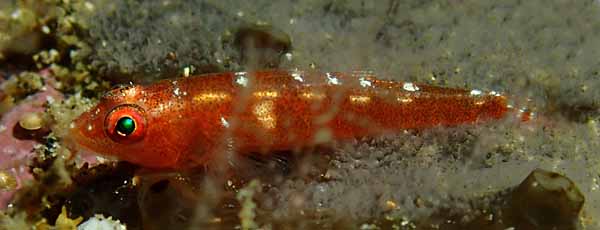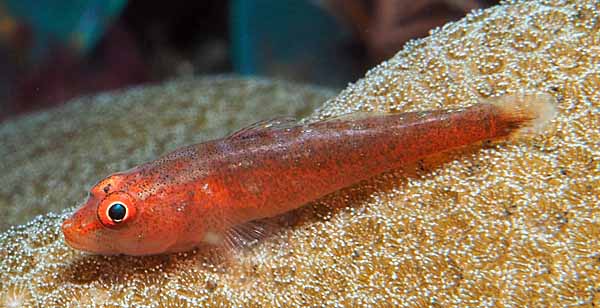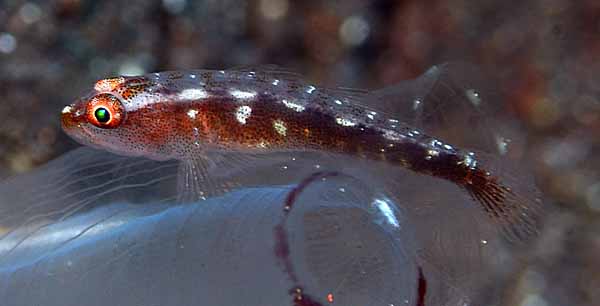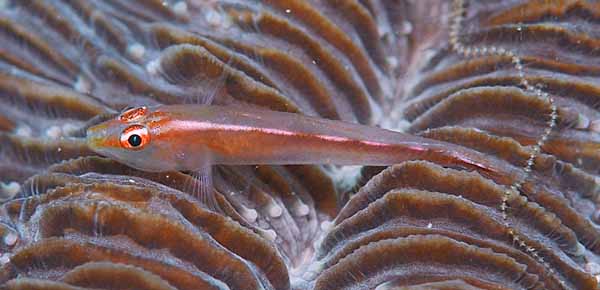Pleurosicya mossambica
Smith, 1959
|
Familie: Gobiidae Lokale Bezeichnung Pleurosicya mossambica (Indonesien, Sulawesi Utara, Bitung) -- (c) Brenton Prigge; iNaturalist; BY-NC 4.0 |
 Pleurosicya mossambica (Indonesien, Bali, Karang Asem) -- (c) Scott and Jeanette Johnson; iNaturalist; BY-NC 4.0  Pleurosicya mossambica (Indonesien, Bali, Karang Asem) -- (c) Scott and Jeanette Johnson; iNaturalist; BY-NC 4.0  Pleurosicya mossambica (Philippinen, Oriental Mindoro, Puerto Galera) -- (c) Sylvain Le Bris; iNaturalist; BY-NC 4.0 |
Typen
Holotypus: SAIAB [früher RUSI] 227 .
Siehe: Eschmeyer, W.N., Fricke, R. & Van der Laan, R. (eds.) 2024. Catalog of Fishes electronic version
Typusfundort: Baixo Pinda, Mosambik, westlicher Indischer Ozean.
Etymologie
Benannt nach der Typuslokalität: Mosambik.
Verbreitung
Indo-Westpazifik: Rotes Meer und Ostafrika bis Fidschi und den Marquesas-Inseln, nördlich bis südlich von Japan, südlich bis südöstlich von Australien und Neukaledonien.
IUCN Status

EX Extinct (ausgestorben)
EW Extinct in the Wild (in der Natur ausgestorben)
CR Critically Endangered (vom Aussterben bedroht)EN Endangered (stark gefährdet)
VU Vulnerable (gefährdet)
NT Near Threatened (potenziell gefährdet)
LC Least Concern (nicht gefährdet)
RE Regionally Extinct (regional oder national ausgestorben)DD Data Deficient (ungenügende Datengrundlage)
NE Not Evaluated (nicht beurteilt)
LC Least Concern (nicht gefährdet)
Gefahren für diese Art: Keine größeren Gefahren bekannt.
Literatur
- Smith, J.L.B. 1959. Gobioid fishes of the families Gobiidae, Periophthalmidae, Trypauchenidae, Taenioididae and Kraemeriidae of the western Indian Ocean. Ichthyological Bulletin, Department of Ichthyology, Rhodes University, 13: 185-225, Pls. 9-13. Zitatseite [:218, Fig. 37, !!]
- Göthel, H. 2019. Über die Vielfalt mariner Lebensgemeinschaften. Die Aquarien- und Terrarienzeitschrift (DATZ), 72 (7): 18-35. Zitatseite [: 31, Farbfoto, Verhalten]
- Oyama, T., Abe, K., Sunobe, T. & Sakai, Y. 2023. Protogynous sexuality and gonad structures in the coral-dwelling goby Pleurosicya mossambica. Ichthyological Research, Published: 20 April 2023. (doi) Zitatseite
